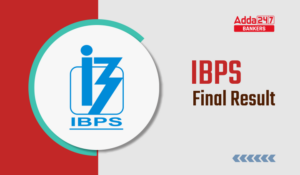Table of Contents
Are you preparing for the Coal India Limited Management trainee 2025 Exam? But, don’t know how to prepare for the Numerical Ability section. The CIL MT exam is a highly competitive test that requires strong numerical and analytical skills. The Numerical Ability section plays a crucial role in assessing a candidate’s problem-solving capabilities, accuracy, and speed in mathematical calculations. To excel in this section, candidates must develop a solid understanding of basic concepts, practice regularly, and have a solid preparation approach.
Preparation Tips for CIL MT Numerical Ability
The selection process of CIL MT exam consists of only the online test and the final merit is based on the online exam solely. The online test consists of two papers: Paper I and Paper 2 for a total of 200 questions. The candidates have to answer these questions in a time duration of 3 hours. The Paper I consists of four subjects which are Reasoning, English Language, General Awareness and Numerical Ability.
CIL MT Numerical Ability Section Exam Pattern & Syllabus
The Numerical Ability section of the CIL MT Exam consists of 25 questions, carrying 25 marks, and is part of the overall 3-hour online test. This section evaluates candidates’ mathematical proficiency, problem-solving skills, and numerical aptitude. The questions are designed to test fundamental arithmetic concepts, requiring speed and accuracy in calculations. A strong grasp of mathematical principles and regular practice are essential to perform well in this section.
Key topics covered:
- Number System
- LCM & HCF
- Average
- Age
- Percentage
- Ratio & Proportion
- Profit & Loss
- Time, Speed & Distance
- Time & Work
- Mixture & Allegation
- Boat & Stream
- Pipes & Cistern
- Simple Interest & Compound Interest
- Surds & Indices
- Mensuration
- Probability
- Permutation & Combination
- Decimal Fraction
- Elementary Statistics
Pro Tips to Prepare for CIL MT Numerical Ability
To ace the CIL MT Numerical Ability section, you need a strategic approach that focuses on conceptual clarity, speed, and accuracy. Below are mentioned some pro tips candidates should follow to score high in the Numerical Ability section.
Strengthen Your Basic
Having a solid grasp of basic mathematical concepts is essential for solving numerical ability questions efficiently. Strengthening your fundamentals will help you tackle even the most complex problems with ease.
- Revise core arithmetic concepts and focus on fundamental topics like addition, subtraction, multiplication, division, percentages, fractions, and decimals. These concepts form the base for advanced problem-solving.
- Learn about prime numbers, divisibility rules, factors, multiples, and number series to improve your problem-solving speed.
- Master ratio, proportion and percentages, these topics are widely used in profit and loss, time and work, speed-distance-time, making them crucial for scoring well.
- Work on fast calculations, division rules, and BODMAS rules to quickly answer the questions.
- Make notes of important formulas covering all topics and revise them regularly.
Build Speed with Accuracy
Since candidates are required to answer 200 questions in just 3 hours it is very important to answer quickly. But, this does not mean that accuracy should not be maintained. Candidates are required to maintain speed and accuracy both at the same time to answer effectively.
- Learn shortcuts, math tricks, and approximation techniques to reduce calculation time without losing accuracy.
- Avoid excessive dependence on pen and paper by practicing calculations mentally, especially for percentage conversions, squares, and cubes.
- In multiple-choice questions, eliminate clearly wrong options to increase your chances of selecting the correct answer quickly.
- Do not rush to answer questions without ensuring correctness. Attempt easier and familiar questions first before moving on to trickier ones.
Focus on High-Weightage Topics
Prioritizing high-weightage topics is essential for maximizing your score in the CIL MT Numerical Ability section. Since some topics are frequently asked and carry more marks, giving them extra attention can improve overall performance.
- Identify the topics that are consistently asked in the exam and focus on mastering them first.
- Focus on topics like Profit & Loss, Time & Work, Time, Speed & Distance, Percentage, SI-CI and Ratio & Proportion and is crucial as they frequently appear in exams.
- Dedicate more time to topics that have a higher probability of being asked while maintaining a balanced approach to cover the syllabus.
- Solve a variety of questions from Mensuration, SI-CI and other high-weightage areas to ensure complete preparedness.
Solve Mock Tests & Previous Year Papers
Practicing mock tests and solving previous year papers is one of the most effective ways to prepare for the Numerical Ability section. It helps in understanding the exam pattern, identifying important topics, and improving problem-solving speed.
- Solve previous year papers to get insights into the type of questions asked, marking scheme, and difficulty level.
- Candidates should identify their strengths and weaknesses by regularly analyzing performance in mock tests and focus on weak areas to improve them.
- Practice under timed conditions with mock tests to build efficiency and ensure that you complete the exam within the given time.
- Practice mock tests to simulate real exam scenarios, reduce anxiety and improve decision-making during the actual exam.
- Compare mock test scores over time to assess improvement and adjust study strategies accordingly.
Stay Consistent & Confident
Consistency and confidence are key to excelling in the CIL MT Numerical Ability section. A steady and disciplined approach to preparation ensures gradual improvement and better performance in the exam.
- Set a daily schedule for numerical ability practice and stick to it.
- Break down your preparation into smaller targets, like mastering a topic in a set period of time, to stay motivated.
- Stay positive & believe in yourself as confidence plays a crucial role in solving problems quickly and accurately. Keep a positive mindset and avoid self-doubt.
- Instead of getting discouraged by mistakes, analyze them and work on improving weak areas for better results.
- Remind yourself of your goal and the reason why you started. Keep your enthusiasm alive by celebrating small achievements.




 IBPS Final Result 2025 Coming Out Tomorr...
IBPS Final Result 2025 Coming Out Tomorr...
 Simple Tips to Avoid Common Mistakes In ...
Simple Tips to Avoid Common Mistakes In ...
 Important Topics & Shortcuts for IDB...
Important Topics & Shortcuts for IDB...


